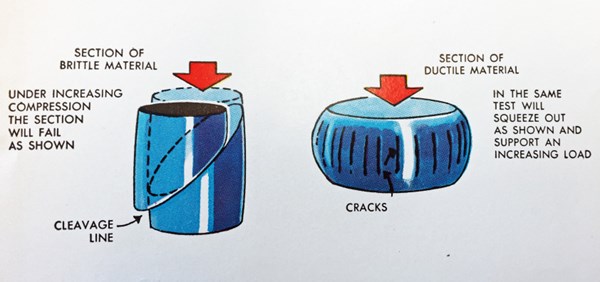Upset Testing for Steel
An “upset” can be performed to determine how the steel will perform under compressive load.

This photo shows how upset testing works.
Mechanical properties of a given steel under compression compare closely with its tensile properties. An “upset” can be performed to determine how the steel will perform under compressive load.
A brittle steel under compression will ultimately fail by breaking along cleavage lines at an angle approximately 30 degrees from the axis of pressure being applied.
A more ductile steel flattens out, rather than cleaving, showing vertical cracks around the outer circumference. This ductile steel will not break, but will continue to flatten as more stress (load or force) is applied.
This compression or upset test is helpful for assuring that steel will successfully cold work. It can also be used to determine the extent of seams, laps or other surface imperfections on the surface of the bar. That’s what I used to do when we were producing drawn wire for cold-heading applications.
Originally posted on PMPAspeakingofprecision.com blog.












.jpg;maxWidth=300;quality=90)


